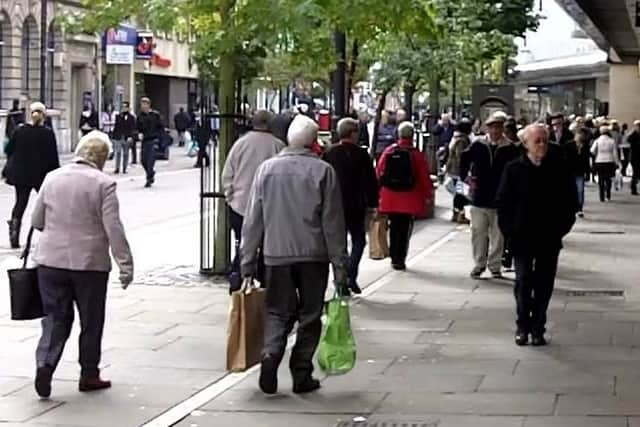Only 56.8% of Doncaster's population has a job
and live on Freeview channel 276
Over half (56.8 per cent) of Doncaster's population is in work or actively looking for work, while 41.7 per cent are economically inactive.
‘Wholesale and Retail Trade’ ranks as the most common industry to work in, accounting for 21.1 per cent of Doncaster's active workforce.
Advertisement
Hide AdAdvertisement
Hide AdNew findings reveal that Wholesale and Retail Trade is the most common industry for Doncaster residents to work in.


Income protection experts Eleos, have analysed data from the Office for National Statistics 2021 Census, to reveal the proportion of the population that are in work, and which are the most common industries to work in.
According to the data approximately 142,604 Doncaster residents are economically active (excluding full students), with 53.8 per cent in employment and three per cent looking for work. For those that are full-time students and also economically active, they make up just 1.5 per cent of the population, with 2,757 of these in a job.
On the other hand, 104,662 (41.7 per cent) are economically inactive, the most common reason for which is retirement. Retired people account for 23.3 per cent of those who are economically inactive.
Advertisement
Hide AdAdvertisement
Hide AdIn contrast, only 5.5 per cent of those long-term sick or disabled aren’t looking for work, those looking after their family and home make up 5.3 per cent, followed closely by students with just 3.5 per cent.
Ranking top as the industry with the most workforce is ‘Wholesale and Retail Trade.’ A whopping 29,090 people are working in this industry, making this 21.1 per cent of the working population of Doncaster.
Following closely in second is the Human Health and Social Work sector with 20,210 people within it. In third is Construction with 14,655.
The study also found that for those who work, 97,976 (71.1 per cent) work full-time, while 39,882 (28.9 per cent) work part-time.
Advertisement
Hide AdAdvertisement
Hide AdSpeaking on the findings, Kiruba Shankar Eswaran, CEO of Eleos said: “The number of economically active people is a key metric in assessing the overall economic health of a city. High levels of economic activity often correlate with a vibrant and growing economy, while low levels may indicate economic challenges.
“Person-facing roles, such as customer service, healthcare, education, and hospitality, are integral to the functioning of society. They contribute directly to the well-being and quality of life for individuals. Monitoring these roles helps identify shifts in societal needs and preferences. It also helps policymakers, businesses, and researchers identify which industries are thriving, where there may be skill shortages, and which sectors are experiencing growth or decline.”
Comment Guidelines
National World encourages reader discussion on our stories. User feedback, insights and back-and-forth exchanges add a rich layer of context to reporting. Please review our Community Guidelines before commenting.